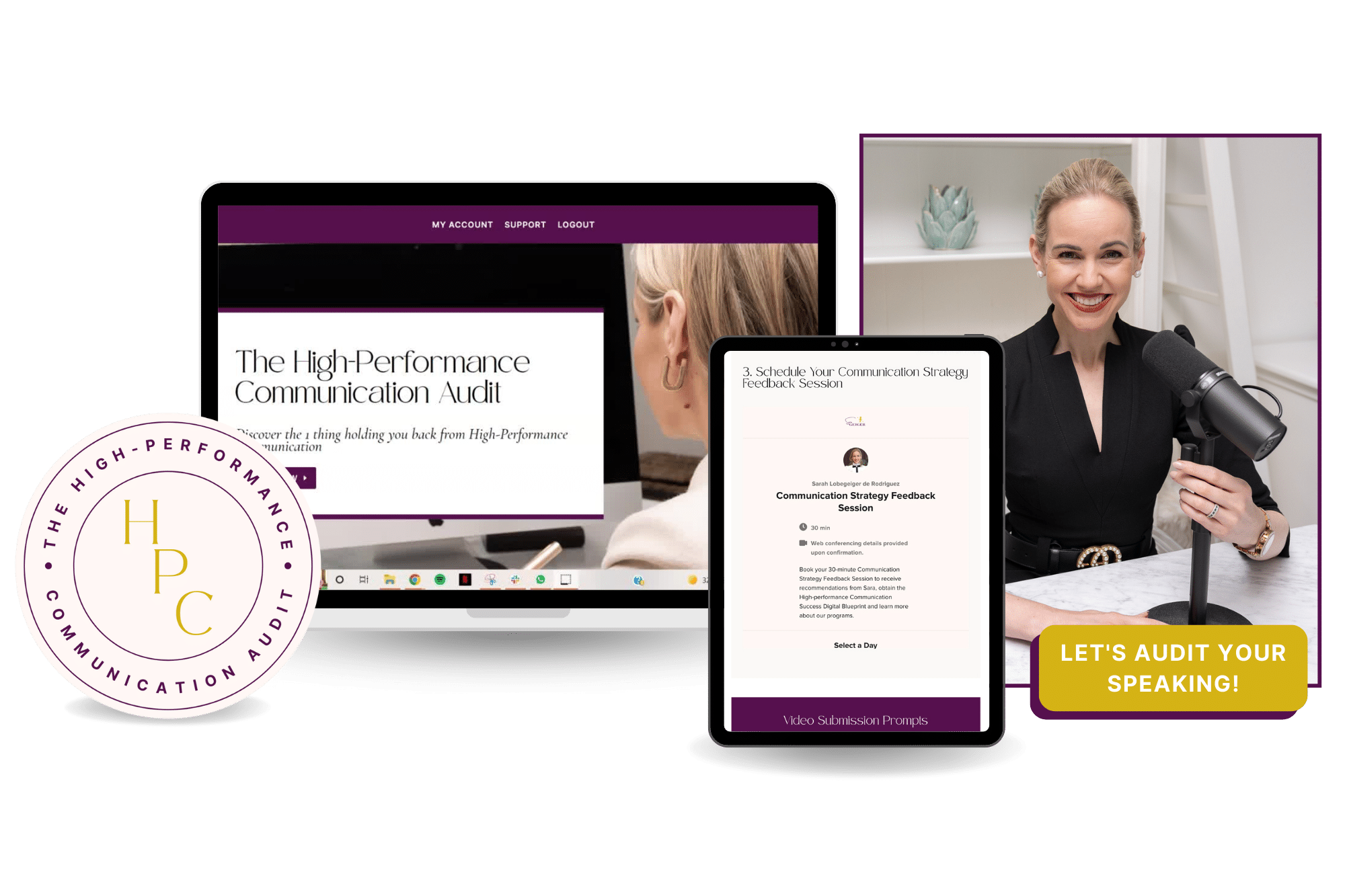Career Communication
The 5-Step Process to Improve your Emotional Intelligence in Leadership or at Work
Learn the five important steps to improve your emotional intelligence in leadership or at work so you can communicate better with confidence.

Lately, the world’s top leadership management researchers have been debating whether emotional intelligence in leadership gets measurable outcomes. Although public opinion is sold on how leaders should front up to work with impeccable soft skills, results are still coming in about whether emotional intelligence in leadership boosts team spirit, profit outcomes and organisational worth. So far, general mental ability has more impact on work success than emotional intelligence for a leader.
Given the debate among the world’s best emotion science researchers, leadership science academics and neuroscientists, it’s imperative to outline that the topic of emotional intelligence is brimming with a mix of information, most of which is still opinion based and yet to be validated by hard data (Antonakis, 2009).
Emotional intelligence is attractive at first glance as a concept in itself. The term gained ground 25 years ago with psychologist Daniel Goleman’s book, Emotional Intelligence: Why it can matter more than IQ.
There are a few “measures” of emotional intelligence that you can use to score your skill, but ultimately the tests leave it up to you to self-report, which realistically sets the “measures” close to an unvalidated quiz on Facebook. Anyone can score as they choose, which is concerning because isn’t emotional intelligence more robust than one’s opinion about themselves? Can we validly score our ability to manage our feelings? If other measures of intelligence like IQ and Personality are more rigorously defended by validated research, shouldn’t emotional intelligence testing be the same?
It’s essential to ensure that robust tests occur, primarily if they are used to gain employee recruitment and promotion data.
So while there’s no proven and reliable measure of emotional intelligence to predict leadership strengths, emotional intelligence as a concept is worthwhile provided you create a clear scope by which you consider it and avoid perceiving it as the sole indicator of leadership outcomes.
Today I’ll walk you through a 5 step process to consider your communication taking into account, so far, unproven concepts relating to emotional intelligence in leadership. But, of course, our communication always impacts others around us, so if you’re striving to enhance your leadership soft skills, you’ll pick up some new strategies to consider.
This blog post is best digested in 3 parts:
- Watch the vlog
- Check the 5 Step Process below.
- If you want to build your leadership soft skills, my High-Performance Communication Audit will uncover the environments, conversations and interactions you can make more comfortable so that speaking at work feels less risky and your confidence improves.
STEP 1 – Goals
If you’re feeling less than comfortable in critical conversations in the workplace, building rapport and exerting influence, it may be a sign that you need to work on your interaction skills with specific people, topics and environments and gain new concrete communication tactics for work.
STEP 2 – Problem Identification
One of the first clues you’ll notice that can indicate emotional intelligence goals might be an option for you is if you’re struggling to maintain self-regulation.
Here you could find delivering messages that lack persuasive impact and influence because your thoughts are racing, and conversation feels like an uphill battle with certain people or activities.
An example of this could be delivering a presentation in front of high-ranking colleagues and stumbling over your topic.
Here the social interaction dimension of rank and reduced relationship potentially impacted your ability to regulate your thoughts and speak comfortably.
The solution to this type of problem requires addressing the barriers to communication that have a social impact. Working on your social intelligence to build a rapport with these difficult conversation partners would be a great starting point that would complement other communication goals like maintaining voice tone consistency, staying on topic, delivering persuasive responses, and presenting professionally around high-ranking colleagues.
Even though self-regulation comes down to how we feel internally while communicating, self-regulation, once lost, is often externally observable.
Here are some visible observations that could suggest that your self-regulation deteriorated while speaking:
- Word finding issues
- Hesitant sentences
- Croaky voice tone
- Audible breathing
- Reduced eye contact
- Asymmetrical or less expansive posture
- Fidgeting
- Avoiding conversations
If you feel like you’re speaking and no one’s listening or you’re suggesting ideas, and no one takes them on board, chances are it’s time to invest in social communication growth to strengthen your interpersonal relationships at work so that you can cut more influence.
You can learn ways to engage your listener more effectively and find the hook points that get conversations started to build up rapport and your professional status at work.
STEP 3 – Diagnosis of breakdowns
Before you dash off and complete an unvalidated emotional intelligence test for leadership, take more productive actions and diagnose the communication areas you are struggling with. Getting a diagnosis of where your message and interactions tend to break down is more effective than completing a general checklist that doesn’t consider your key contacts, current position and rank, working environment and all the other nuances that determine your impression management at work.
You can have a shot at doing a simple diagnosis yourself or, better still, enlist a qualified communication specialist to audit your communication across the core areas you need for your career. I know if something is going wrong medically, I want an expert diagnosis. If your speaking breaks down at work, it’ll always impact your confidence, so I strongly recommend a formal assessment of your professional communication.
But for now, what follows is a quick list of possible areas to consider.
Clues that indicate your Career Communication, Leadership soft skills and possible emotional intelligence need work:
- Speaking with less persuasive impact and influence
- Difficulties with conflict management
- Challenges with optimising employee or customer experience
- Failure to set boundaries around your workflow and workload
- Avoidance of challenging topics and conversations
- Difficulty building team unity and vision across an organisation while leading your team
- Difficulties discussing social-emotional topics necessary for building relationships and trust
- Interpersonal tension or conflict with stakeholders and team members
- Problems saying no with self-assurance
- Worrying excessively about coming conversations, struggling to sleep at night due to work conflicts and issues
- If you’re a leader and find yourself facing challenges with leading your team, providing critical feedback to employees or executing directives in a way that gets employee buy-in
- Reduced capacity or insight into your team member’s perspectives, engagement and motivators
Do you have more insight now into how communication breakdowns affect how we feel and respond when interacting at work?
Maybe you’re even starting to see what is getting in the way of securing that promotion or increasing your leadership success.
Keep reading to learn more about solutions to improve your professional speaking to maximise your career and access promotions and leadership opportunities.
STEP 4 – Design solutions
When solving a problem, the best solutions are designed with validated information and tried and tested methods.
You might be wondering what proven methods exist for career communication. Are there formulas for speaking professionally at work?
In my work as an executive speaking consultant with a decade of clinical experience as a speech pathologist behind me, I’m dedicated to creating professional speaking solutions for my clients informed by research.
I’ve devoted a decade to stay up to date with the latest research into career communication.
If you’ve been feeling awkward or less comfortable in high-pressure situations at work and you’re looking for a solution to increase your confidence, there are robust methods to enhance your professional communication skills.

Discover the 1 Thing Holding You Back from High-Performance Communication.
This detailed and comprehensive audit of your speaking, word choice, and communication presence is the best investment you can make to ensure CONFIDENCE and CAREER GROWTH when speaking professionally and socially at work.
STEP 5 – Self-regulation strategies
I’ve seen many of my clients move from monotonous, weak and hesitant speaking to absolute masters of their message. All it takes is a new systematic approach to speaking. Changed speaking habits can be the exact thing you need to land your dream job, start your entrepreneurial journey, cinch top-level speaking engagements or finally win that executive management role.
Speaking confidently is nothing about your personality. It’s everything about making sure nothing is missing in your tool kit.
It’s a three-second world.
Your words need to be ready.
But you can only learn to speak confidently with anyone anywhere if you have the tools to transform your speaking logic & habits.
And the C-Suite shows you how.

The C-Suite is an engaging, easy-to-digest hands-on, and EFFECTIVE experience for your communication. This modern elocution course provides a total fix for career communication. In addition, my online science-based communication courses help you speak with more clarity, charisma & confidence.
You’ll start the first module working through Speaking Comfort strategies- the key to self-regulation. I’ll train you to short-circuit speaking discomfort so that you gain control over your message and delivery everywhere and with everyone.
References
-
Antonakis, J., et al. (2009). “Does Leadership Need Emotional Intelligence?” The Leadership Quarterly: 247-261.
-
David, S. (2016). Emotional Agility, Avery Books.
-
Vanuk, J. R., et al. (2019). “Ability-Based Emotional Intelligence Is Associated With Greater Cardiac Vagal Control and Reactivity.” Frontiers in Human Neuroscience 13(181).
Did you enjoy this post? Make sure to subscribe to our YouTube channel to get more content to increase your communication skills!
About the Author
Dr Sarah Lobegeiger de Rodriguez is a Keynote Speaker, Executive Speaking Coach, and Opera Singer who likes to play with words, sounds, and your impact.
Her academic background is in Music Performance, Communication Science and Speech & Language Pathology. She assists executive communication clients all over the world as a communication consultant with strong expertise in CEO, Founder and Entrepreneur communication strategies.
Connect with Sarah on LinkedIn.
© CADENZA
Level 14, 380 St Kilda Road, Melbourne, 3004
Privacy Policy
Terms & Conditions
Position Statement on Racism

